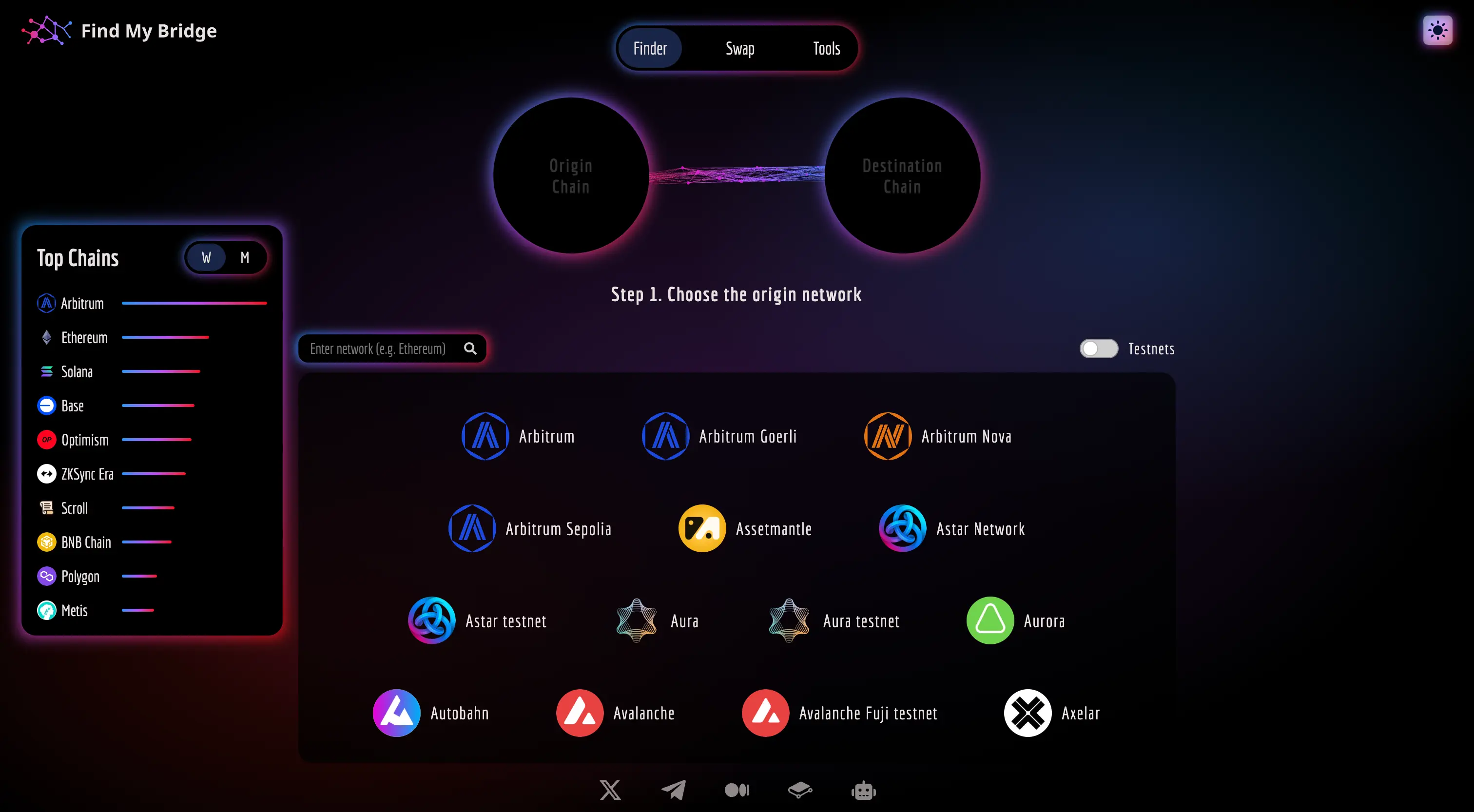
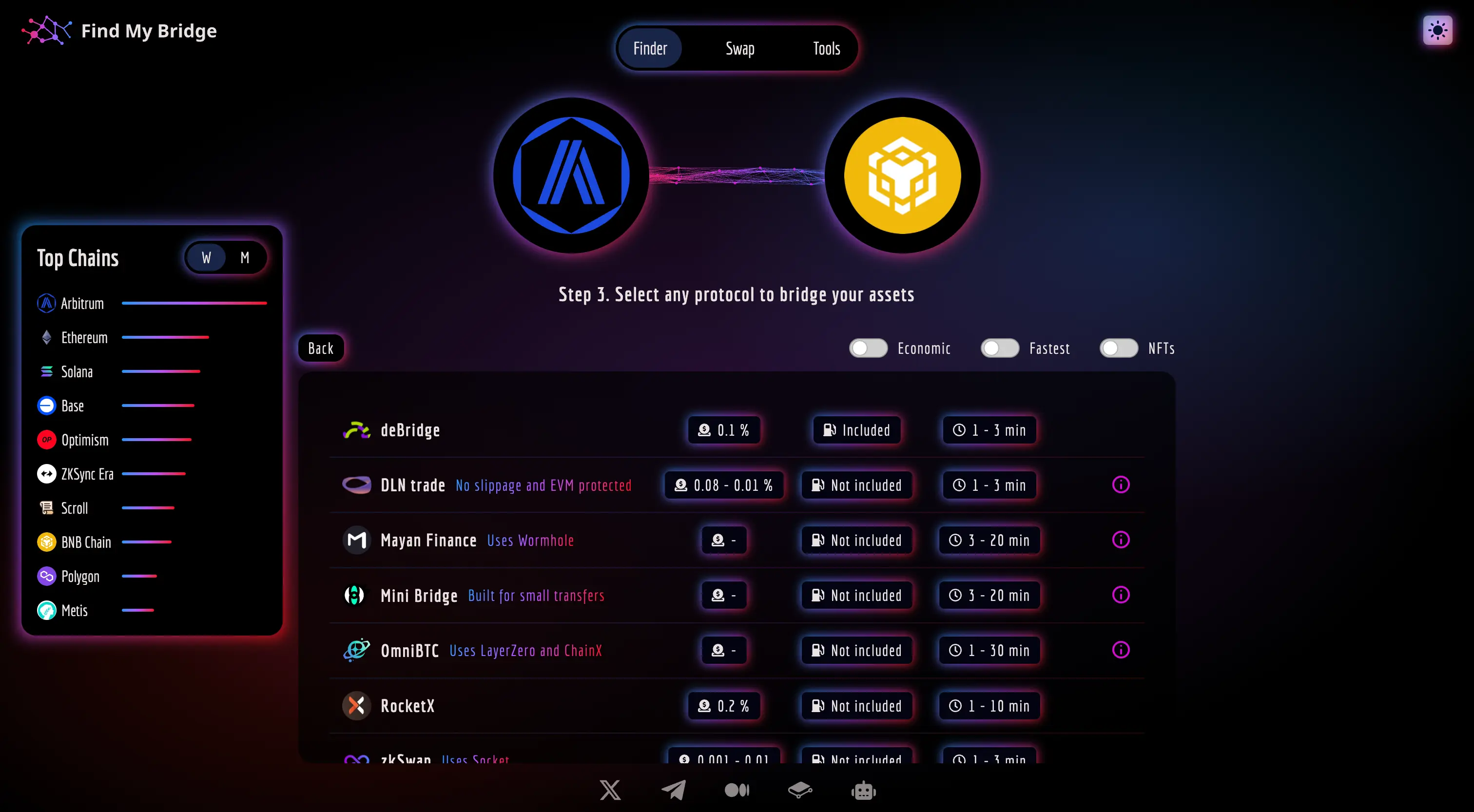
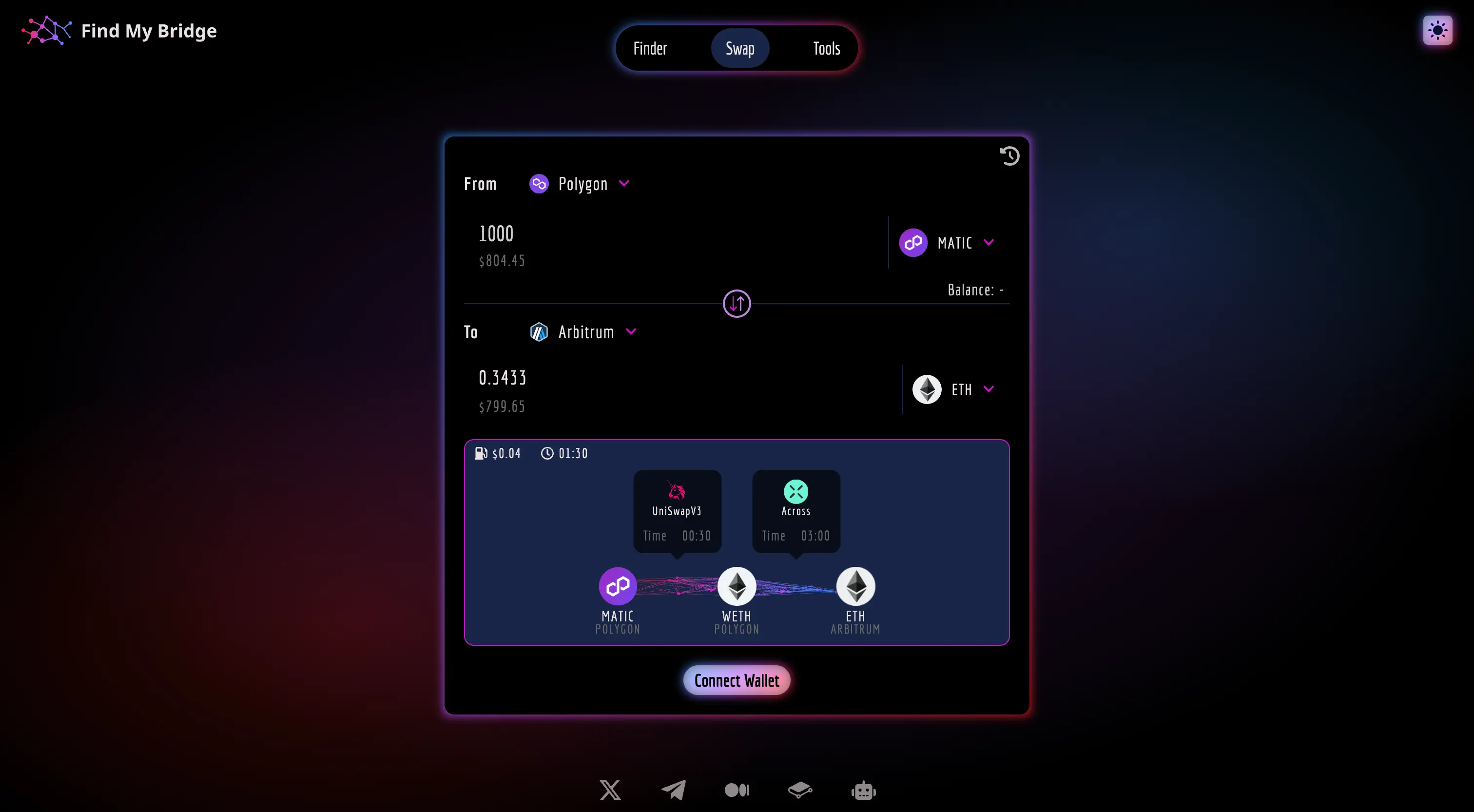
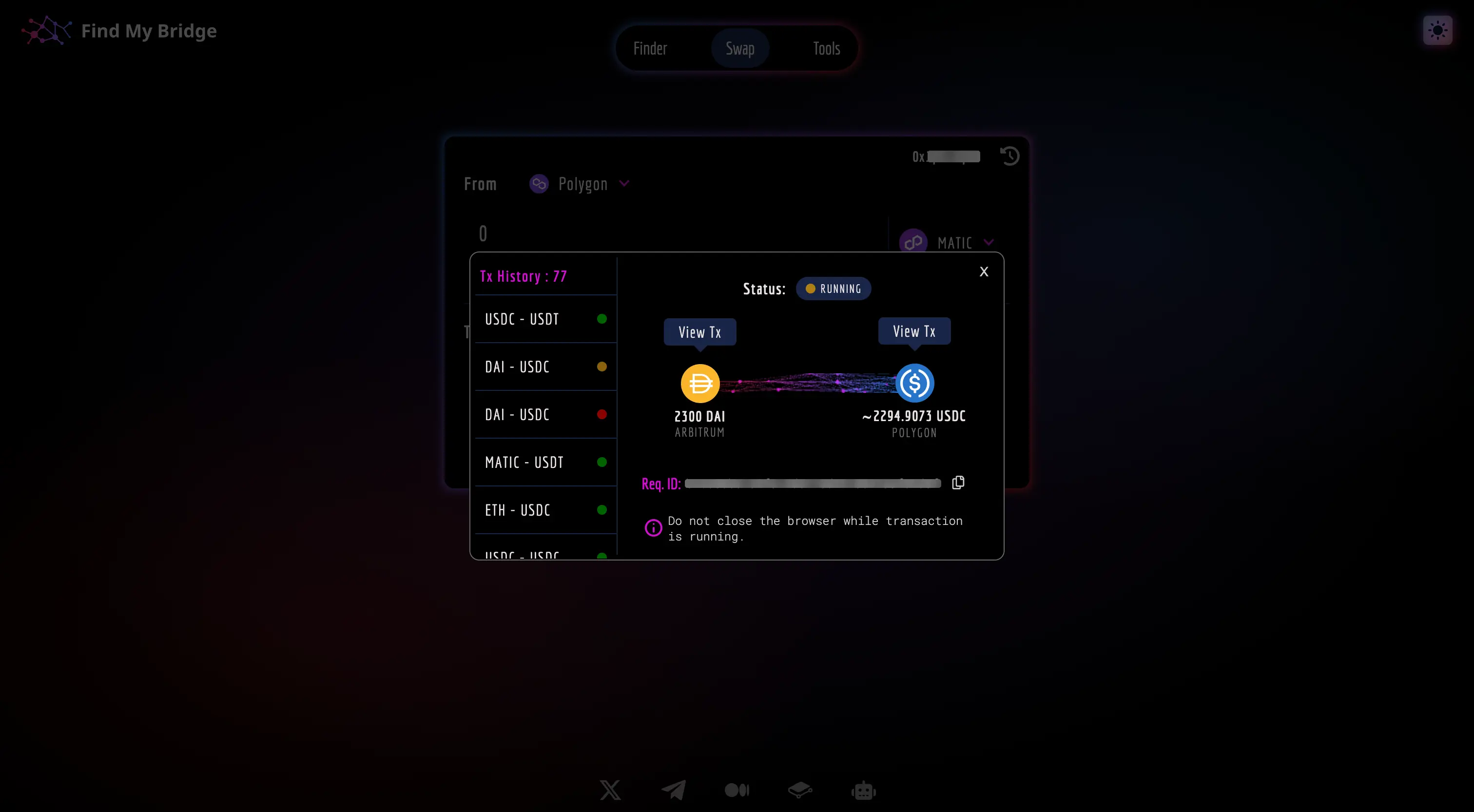
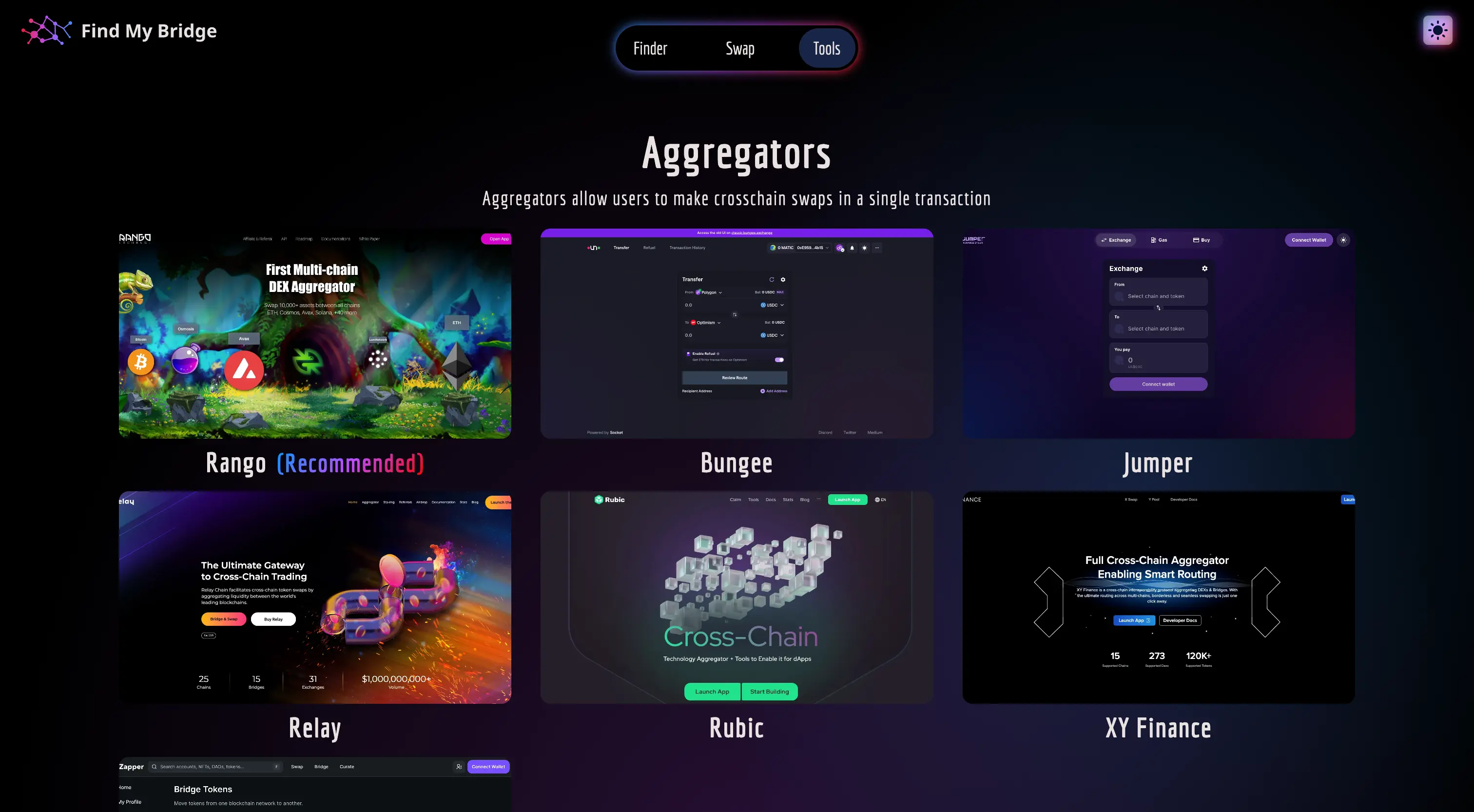
With the explosion of diverse blockchains and the continuous emergence of new bridges, navigating the blockchain ecosystem can feel like a maze. I want to simplify this complexity by providing a centralized hub for discovering and comparing bridges. As the number of bridges for a given route grows, it becomes challenging to discern which one is the most efficient and cost-effective. FindMyBridge streamlines this process, ensuring users can easily identify the best bridge for their specific needs, saving time, money, and resources in the ever-expanding blockchain landscape.
How it works?
Swap section
- The user connects the wallet.
- Select the origin blockchain and token to swap.
- Select the destination blockchain and token to receive.
- The app displays the swap path, the protocols involved, and relevant data such as execution time, transaction fees, and more.
- The user accepts and clicks on swap.
- The app shows the process until the transaction has been completed.
- The user can access their history and check the transactions status.
Finder section
- The user selects the origin blockchain from all the available chains, including testnets.
- The app displays all the available destinations for sending the tokens.
- The user then selects the destination blockchain.
- The app presents all the available bridges for swapping assets between the two selected blockchains.
- Users can compare the bridges and make informed decisions based on execution times, transaction fees, and stay updated with the latest relevant information for each bridge.
Tools section
- A curated directory of other useful tools and resources for cross-chain users.
Admin dashboard
- The admins have to authenticate themselves by signing in with an authorized wallet.
- The admins can view the current list of all available chains, bridges, and routes between them.
- The admins can check, modify, or delete information about chains, bridges, and routes.
- The admins can review all the collected data regarding users' transactions, popularity of chains and bridges, telegram bot usage, and generate graphical reports for a more thorough analysis.
Technology Used
App
- Next.js
- CSS modules
- MongoDB for the database
- Node.js for the Telegram Bot mini-app
Admin Dashboard
- React
- Node.js with Express.js
- SignIn-With-Ethereum as authentication method
Responsibilities as developer
- Apply development best practices to make the code understandable, maintainable, and scalable.
- Design and build the database architecture.
- Build the API REST for the admin dashboard.
- Collect and save the data to the database.
- Design and develop the web app for display the data using Incremental Static Regeneration.
- Integrate a cross-chain swap using a third-party SDK.
- Develop a user registration and authentication method using Sign-In-With-Ethereum.
- Develop a new app freemium model with a fully on-chain payment gateway using ERC20 stablecoins.
- Build the in-house analytics system, to collect data about chains and protocols interest.
- Migrate from Next.js12 to Next.js14, updating from Pages Router to the new App Router. Use of server actions.
- Develop a mini-app Telegram Bot version that enables users to use the app directly from Telegram.
- Improve the URL structure for better readability and indexing by search engine crawlers
Key accomplishment:
- Boosted user acquisition 5x through improvements in SEO strategy.
- Improvement of the app monetization thanks to integrate a freemiun content model, manage fully onchain.
- Improvement of the app monetization thanks to in-house analytics.
- 99/100 performance evaluation using Vercel analysis tool.